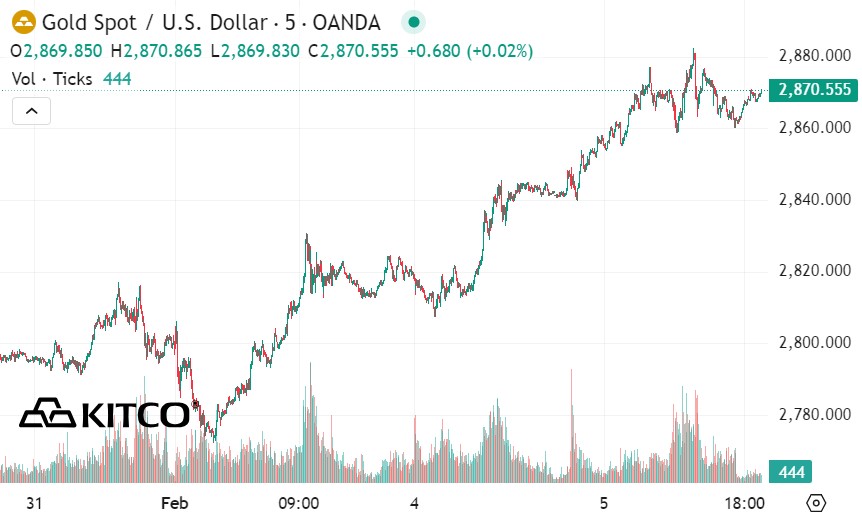US economic data supports gold prices
The U.S. services sector weakened last month while price pressures eased, according to the latest data from the Institute for Supply Management (ISM). The ISM announced Wednesday morning that its services purchasing managers index (PMI) fell to 52.8 in January, down from a revised 54 in December. The data was weaker than expected, with economists expecting a reading of 54.2.
If the index is above 50, the economy is growing; if it is below 50, the economy is shrinking. The further the index is from 50, the faster the growth or contraction.
The services PMI is a key indicator of the health of the service sector, which accounts for a large portion of the US economy. When the index declines more than expected, it reflects a slowdown in economic activity, which can raise concerns about a broader US economic slowdown. In such a context, investors tend to seek gold as a safe-haven asset, pushing up its price.
Weak economic data typically increases the likelihood that the Federal Reserve will ease monetary policy or at least hold off on raising interest rates. If the U.S. economy continues to weaken, the Fed may consider cutting rates sooner to support growth. Lower interest rates reduce the opportunity cost of holding gold, making the precious metal more attractive, which in turn supports gold prices.
Gold prices rose after the data was released at 10 a.m. EDT. Spot gold was trading at $2,870.50 an ounce at 8 a.m. on February 6, 2025 (Vietnam time) on Kitco.

Components in the report were mixed. The new orders index fell to 51.3, down from 54.2 in December. Meanwhile, the business activity index also fell to 54.5 from 58.2 in the previous month.
However, inflationary pressures in this sector eased, with the price index falling to 60.4 in January, down from 64.4 in December.
The service sector labour market also improved in January and remained in expansion territory, with the employment index rising to 52.3, up from the previous month's revised 51.3.
Risk of financial instability
As gold prices hit record highs, Robert D. Kaplan (an American geopolitical analyst, journalist and author, known for his works on international relations, global strategy and political history) warned of the risk of financial instability.
Robert D. Kaplan argues that the surge in gold hoarding could be a sign that major powers are preparing for deeper financial turmoil.
“Kaplan believes that central banks’ increased purchases of gold could be a sign of capital flight or a deepening economic and political crisis,” he said, adding that gold hoarding often reflects pessimism about the near- to medium-term future.
Central banks continued to dominate the gold market last year, buying more than 1,000 tonnes of gold for the third consecutive year, the latest report from the World Gold Council shows.











